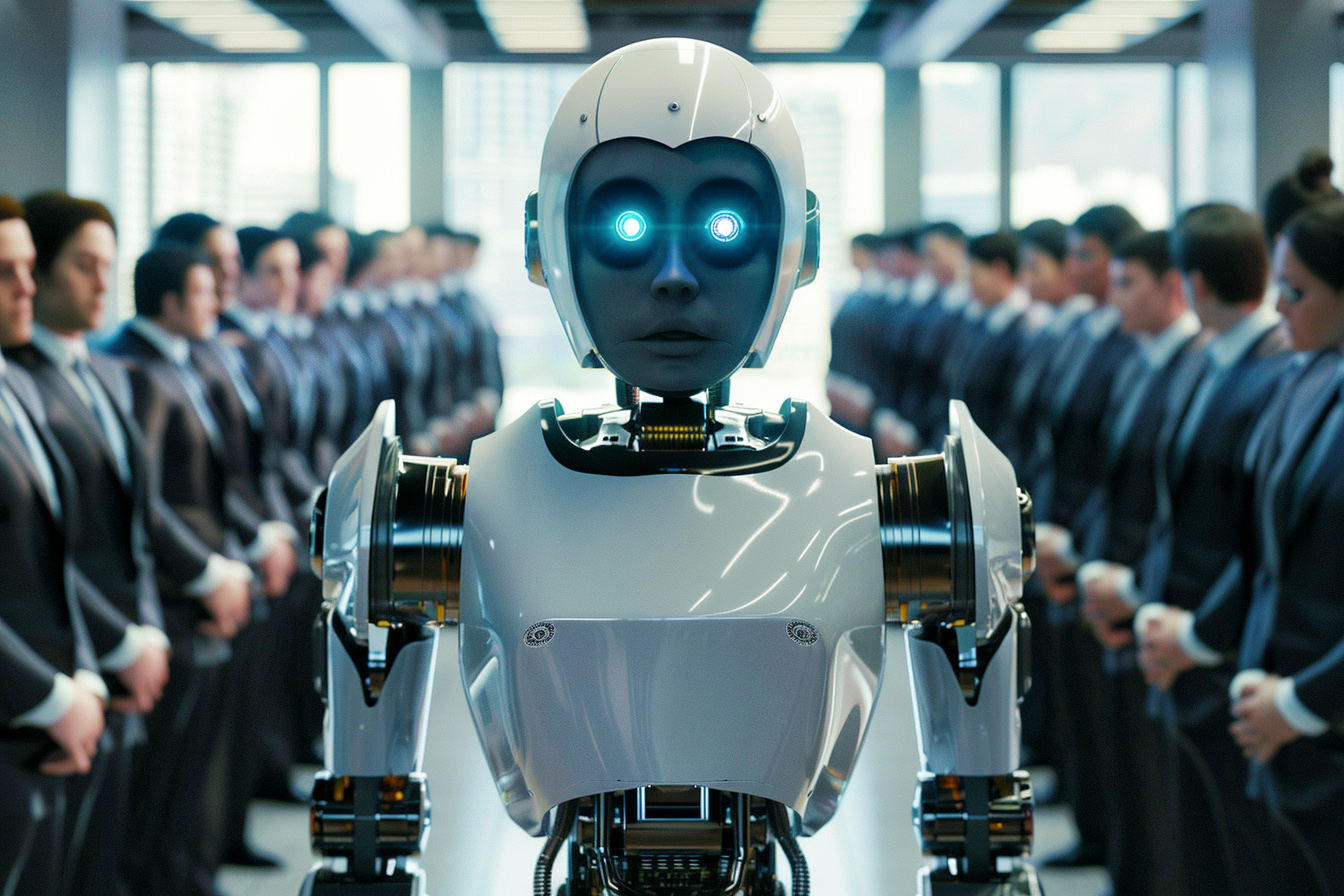Artificial Intelligence (AI) is rapidly transforming the work landscape, with profound implications for white-collar middle-class workers. As AI systems become increasingly sophisticated, they’re capable of performing tasks once thought to be the exclusive domain of human intelligence.
This technological revolution promises increased efficiency and productivity. However, it also poses significant challenges to the job security and economic stability of the middle class—a crucial segment of the workforce that has long been the backbone of modern economies.
Job Displacement: A Growing Concern
Many white-collar professionals face the threat of job displacement. Software development, information technology, legal services, and accounting are vulnerable to AI disruption. These fields rely heavily on information processing, analysis, and decision-making—tasks that AI excels at performing.
Projections suggest that millions of jobs could be at risk in the coming decades. The pace of displacement may vary, but the trend appears inevitable. Even traditionally stable professions are not immune to AI’s reach.
As AI systems become more advanced, they can handle increasingly complex tasks, potentially rendering some human roles redundant. This shift could lead to significant job losses or dramatic changes in job responsibilities for many middle-class workers.
Wage Suppression and Income Inequality
The proliferation of AI technologies may contribute to wage suppression in specific sectors. As AI takes over tasks previously performed by humans, the demand for human labor in these areas could decrease. This oversupply of workers may make it challenging for individuals to negotiate better pay or maintain current salary levels.
AI-driven productivity gains often benefit company executives and shareholders more than average workers. The income gap between those who own and develop AI technologies and those displaced by them may widen. Middle-class workers may find themselves competing for fewer positions, driving down wages.
This dynamic can exacerbate income inequality, putting additional pressure on the middle class and potentially shrinking its size and economic influence.
The Challenge of Skill Obsolescence
In the fast-paced world of AI development, skills that are valuable today may become obsolete tomorrow. This rapid evolution presents a significant challenge for middle-class workers who must adapt to remain relevant in the job market.
Workers may need frequent upskilling and reskilling to keep pace with AI advancements. The cost and time investment required for continuous learning can be substantial. Those unable to adapt quickly may be left behind in the job market.
The pressure to constantly update one’s skill set can be financially and emotionally taxing, adding a new layer of stress to the professional lives of many middle-class workers.
Transformation of Job Quality and Satisfaction
Even when jobs aren’t eliminated, AI can significantly alter their nature. As AI systems take over more complex and analytical tasks, human workers may be left with more routine and less fulfilling responsibilities.
Career growth opportunities may become limited as AI handles higher-level tasks. Job satisfaction could decline as work becomes less challenging or creative. The sense of purpose and accomplishment derived from work may diminish for some professionals.
This transformation of job quality could have far-reaching effects on worker morale, productivity, and overall career trajectories.
Regional Economic Disparities
The impact of AI on middle-class jobs is unlikely to be uniform across all regions. Areas heavily dependent on industries susceptible to AI automation may face more severe economic challenges.
Some regions may experience higher unemployment rates and economic downturns. The gap between tech-centric urban areas and other regions could widen, and workers in affected areas may struggle to find comparable employment locally.
These regional disparities could lead to increased geographic inequality, potentially altering migration patterns and pressuring certain local economies.
The AI Adaptation Imperative
To thrive in an AI-driven economy, middle-class workers must focus on developing skills that complement, rather than compete with, AI technologies. This adaptation is crucial for maintaining relevance in the evolving job market.
Emphasis should be placed on uniquely human capabilities like creativity, emotional intelligence, and complex problem-solving. Workers need to position themselves as collaborators with AI systems rather than competitors. Continuous learning and flexibility will be critical attributes for success.
By embracing this adaptation imperative, workers can potentially enhance their value in the workplace and create new opportunities for themselves.
Also, learning a trade like electricians, plumbers, mechanics, and HVAC will be mostly unaffected by AI technology.
Potential Positive Outcomes and Opportunities
Despite the challenges, the rise of AI also presents new opportunities for the middle class. The technology is creating entirely new job categories and has the potential to augment human capabilities in unprecedented ways.
Roles in AI development, implementation, and ethics are emerging. AI could help rebuild the middle class by extending human expertise to a broader workforce. Some economists argue that AI could increase productivity and create new forms of work we haven’t yet imagined.
While it’s important to acknowledge the risks, these potential positive outcomes suggest that the future of work with AI is not entirely bleak for the middle class.
Policy Considerations and Mitigation Strategies
Addressing the negative economic impact of AI on middle-class workers will require thoughtful policy measures and proactive strategies.
Education systems may need to be revamped to prepare workers for an AI-driven economy better. Policies should be considered to optimize AI’s economic benefits for everyone in the economy. Support systems for displaced workers, including retraining programs and transition assistance, will be crucial.
Policymakers, businesses, and educational institutions must work together to create an environment where the benefits of AI can be realized without sacrificing the economic well-being of the middle class.
Conclusion: Navigating the AI-Driven Future of Work
Integrating AI into the workplace presents significant challenges and potential opportunities for white-collar middle-class workers. While job displacement, wage suppression, and skill obsolescence are real concerns, there’s also the potential for new job creation and enhanced human capabilities.
Navigating this new landscape will require adaptability, continuous learning, and thoughtful policy measures. As we move forward, we must work to shape an AI-driven future that benefits not just a select few but society as a whole, preserving and potentially strengthening the middle class in the process.
